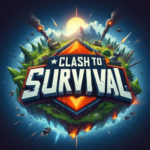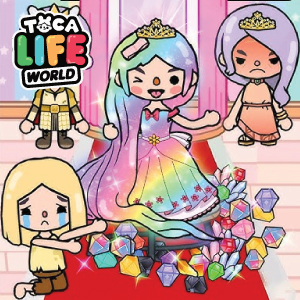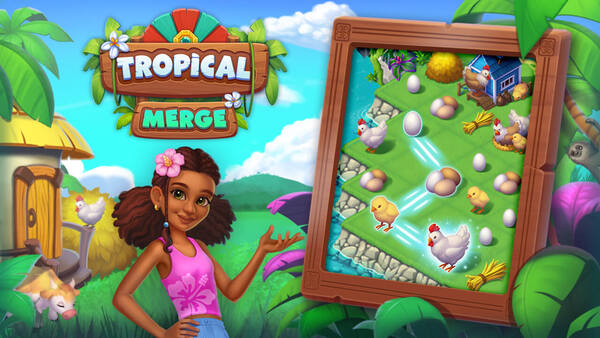Fortnite: The Ever-Evolving Phenomenon that Redefined Gaming
Fortnite, developed by Epic Games, burst onto the scene in 2017 and swiftly transformed from "just another shooter" into a global cultural phenomenon. Initially conceived as a cooperative survival game titled "Fortnite: Save the World," its Battle Royale mode, released just two months later, catapulted it into unprecedented success. This free-to-play juggernaut not only popularized the battle royale genre but also pioneered innovative monetization strategies, cross-platform play, and a live-service model that keeps its massive player base engaged. With over 650 million registered users by 2023 and 60 million daily active users in 2025, Fortnite's influence extends far beyond mere gameplay, impacting music, fashion, and even the broader entertainment industry through its ingenious collaborations and in-game events. Its journey from a simple survival game to a sprawling metaverse platform is a testament to Epic Games' agility and commitment to continuous innovation.
The Genesis: From Save the World to Battle Royale (2011-2017)
Fortnite's origins are rooted in an internal game jam at Epic Games around 2011. The initial concept aimed to merge construction-based games like Minecraft with shooter mechanics, eventually leading to "Fortnite: Save the World." This player-versus-environment (PvE) cooperative game, where players build and defend bases against zombie-like hordes, was in development for several years. The process was slow, complicated by a shift in Epic's business model towards "games as a service" and a significant investment from Chinese publisher Tencent.
However, the landscape of gaming shifted dramatically with the rise of
PlayerUnknown's Battlegrounds (PUBG) in mid-2017. Recognizing the immense potential of the battle royale genre, Epic Games swiftly repurposed assets from "Save the World" to create a new, distinct mode. What began as an experimental side project quickly evolved into "Fortnite Battle Royale," initially planned as part of the paid "Save the World" package but ultimately released as a standalone, free-to-play title. This decision was a masterstroke, allowing for rapid player acquisition and laying the groundwork for its explosive growth.
The Immediate Impact of Free-to-Play
The decision to make Fortnite Battle Royale free-to-play was pivotal. It eliminated the barrier to entry, allowing millions of players to jump in without an initial investment. This strategy, combined with its accessible yet deep gameplay, led to an unprecedented surge in popularity. Within two weeks of its release, Fortnite Battle Royale had already amassed over 10 million players, a clear indicator of its immediate appeal. This rapid expansion prompted Epic to dedicate separate teams to the Battle Royale development, ensuring it could evolve independently while sharing core engine elements and art assets with "Save the World."
The Rise of a Cultural Phenomenon: Gameplay and Innovation (2017-2019)
Following its free-to-play launch, Fortnite Battle Royale quickly became a global sensation. Its core gameplay loop—dropping onto a shrinking island with 99 other players, scavenging for loot, and building structures to outmaneuver opponents—proved incredibly addictive. But it was the unique building mechanic, inherited from "Save the World," that truly set it apart from other battle royale titles. Players could harvest materials like wood, stone, and metal from nearly any object in the environment and instantly construct defensive walls, ramps, floors, and roofs. This added a layer of strategic depth and creativity previously unseen in the genre.
Beyond its innovative gameplay, Epic Games fostered a dynamic and ever-changing environment through consistent updates. New weapons, items, and vehicles were introduced regularly, often alongside significant map alterations that contributed to an ongoing narrative. Limited-time modes (LTMs) like 50v50 provided experimental variations, keeping the experience fresh and allowing developers to gather player feedback in real-time. This iterative approach, coupled with a vibrant art style and a lighthearted tone, resonated with a broad audience, from casual gamers to aspiring esports pros.
The Battle Pass System and Cosmetic Monetization
Fortnite's monetization model, centered around the "Battle Pass" and purely cosmetic items, proved revolutionary. Unlike many free-to-play games that rely on "pay-to-win" mechanics, Fortnite ensured that all in-game purchases were purely aesthetic, offering no competitive advantage. Players could purchase V-Bucks, the in-game currency, with real money to acquire:
- Skins: Character outfits that drastically change a player's appearance.
- Emotes: Customizable dance moves and expressions.
- Gliders: Cosmetic designs for the parachute used to descend onto the island.
- Harvesting Tools: Unique pickaxe designs.
The Battle Pass, a seasonal progression system, offered a tiered reward structure for playing and completing challenges. Players could purchase the Battle Pass for V-Bucks, then unlock a multitude of cosmetic items as they leveled up, creating a compelling "fear of missing out" (FOMO) incentive that fueled engagement and spending. This ethical and player-friendly monetization approach generated billions in revenue and set a new standard for the industry.
Pros of the Monetization Model:
- Fairness: No pay-to-win elements, ensuring a level playing field.
- Player Engagement: Battle Pass incentivizes consistent play and challenge completion.
- Customization: Vast array of cosmetic options for self-expression.
- Revenue Generation: Highly profitable for Epic Games without alienating players.
Cons of the Monetization Model:
- Cost for Cosmetics: Can become expensive for players who desire many skins.
- FOMO: The limited-time nature of Battle Pass items can pressure players to spend.
- Addiction Potential: Constant updates and new cosmetics can encourage continuous spending.
Rating: 4.5/5 (for its fairness and industry impact)
Expanding Horizons: Creative Mode and Beyond (2018-2022)
In December 2018, Fortnite introduced Creative Mode, a groundbreaking addition that further solidified its position as a platform, not just a game. Creative Mode provided players with their own private, persistent islands where they could build, design, and even program their own unique experiences using a vast library of in-game assets and tools. This was a direct response to player demand for more sandbox elements, reminiscent of games like Minecraft.
Players could:
- Construct intricate structures and landscapes.
- Place various devices like spawn points, timers, scoreboards, and traps.
- Customize game rules, player settings, and win conditions.
- Invite friends to their islands to play custom mini-games, obstacle courses, or even entire narrative experiences.
This mode democratized game development, empowering a community of creators to design and share their content, which could then be featured in the game's "Discover" tab, gaining massive exposure. Creative Mode laid the foundation for Fortnite's evolution into a metaverse, a persistent virtual world where players could engage in a multitude of activities beyond the traditional battle royale.
The Emergence of Zero Build and Diverse Game Modes
While building was a core differentiator, Epic recognized that not all players enjoyed or excelled at it. In March 2022, they introduced "Zero Build," a permanent mode that removed the building mechanic entirely and added an "overshield" for increased durability. This move significantly broadened Fortnite's appeal, attracting players who preferred pure gunplay and tactical movement. Zero Build quickly gained immense popularity, proving that the core appeal of Fortnite extended beyond its construction elements.
Epic continued to diversify the gameplay experience with other modes:
- Party Royale: A social hub for concerts and non-combat events.
- Fortnite OG: A throwback mode reintroducing the original Chapter 1 map and mechanics.
- Fortnite Reload: A smaller-scale Battle Royale with respawns and a compact map.
This constant introduction of new experiences, both temporary and permanent, demonstrated Epic's commitment to catering to a wide range of player preferences and ensuring longevity.
The Apex of Influence: Collaborations and Live Events (2019-2023)
Fortnite truly cemented its status as a cultural behemoth through its unprecedented series of collaborations and in-game live events. These partnerships transcended traditional gaming boundaries, bringing in iconic characters and celebrities from movies, music, and other video game franchises.
Major Collaborations:
- Marvel Cinematic Universe: Crossovers with Avengers, Thanos, Spider-Man, and more, introducing character skins, themed items, and even entire narrative events.
- DC Comics: Batman, Superman, Wonder Woman, and other DC heroes and villains joining the roster.
- Star Wars: Lightsabers as in-game weapons, character skins like the Mandalorian and Darth Vader, and themed areas on the map.
- Music Artists: Virtual concerts featuring global superstars like Marshmello, Travis Scott, and Ariana Grande, drawing millions of simultaneous viewers and generating significant revenue from exclusive cosmetic bundles. These events blurred the lines between gaming, music, and entertainment, proving the metaverse concept on a grand scale.
- Other Video Games: Partnerships with franchises like God of War, Halo, Street Fighter, and Naruto, introducing beloved characters into the Fortnite universe.
These collaborations not only provided a steady stream of fresh content and revenue but also acted as powerful marketing tools, drawing in new audiences from diverse fan bases. The integration was often deep, with special challenges, limited-time modes, and map changes accompanying the events, creating a truly immersive experience.
Impact of Live Events:
Fortnite's live events are legendary for their scale and impact. They are often narrative-driven, culminating in a climactic, one-time experience that dramatically alters the game's map or introduces a new chapter.
- The Black Hole (Chapter 1 Season X Finale): The entire map was sucked into a black hole, rendering the game unplayable for days and generating massive global discussion and anticipation for Chapter 2.
- Galactus Event (Chapter 2 Season 4 Finale): Players piloted battle buses to fight the cosmic entity Galactus, an epic conclusion to a Marvel-themed season.
- The Big Bang Event (December 2023): This event concluded Chapter 4 and simultaneously introduced three new distinct game modes – LEGO Fortnite, Rocket Racing, and Fortnite Festival – completely transforming the game's identity.
These events are not just in-game occurrences; they are cultural moments that drive massive player spikes, social media trends, and mainstream media coverage. They showcase Epic Games' mastery of LiveOps, continuously evolving the game in response to player feedback and planned narratives.
The Competitive Landscape: Fortnite Esports (2018-Present)
From its early days, Fortnite exhibited immense potential for competitive play. The unique building mechanics added a layer of skill and complexity that rewarded quick thinking, precise execution, and strategic foresight. Epic Games quickly invested in fostering a thriving esports scene, culminating in the Fortnite World Cup.
The Fortnite World Cup 2019:
The inaugural Fortnite World Cup in 2019 was a landmark event, boasting a staggering $30 million prize pool, with the solo champion, Kyle "Bugha" Giersdorf, taking home $3 million. This event showcased the pinnacle of Fortnite competitive play, demonstrating the high skill ceiling and entertainment value of the game. It attracted millions of viewers globally, solidifying Fortnite's position in the esports ecosystem.
Evolution of Competitive Formats:
While the World Cup was a grand spectacle, Epic has experimented with various competitive formats over the years, including:
- Fortnite Champion Series (FNCS): The primary competitive circuit, featuring regional tournaments and majors across different platforms and team sizes (duos, trios, squads).
- Cash Cups: Regular online tournaments offering smaller prize pools, providing opportunities for a wider range of players to compete.
- DreamHack Open: Third-party tournaments that often feature Fortnite.
- Ranked Mode: Introduced in May 2023 for both Battle Royale and Zero Build, providing a structured ladder system for competitive players.
Pros of Fortnite Esports:
- High Skill Ceiling: Building and editing mechanics create a deep and rewarding competitive experience.
- Accessibility: Open qualifiers and various tournament types allow many players to participate.
- High Production Value: Major events are well-produced and engaging for viewers.
- Community Engagement: Fosters a dedicated competitive community.
Cons of Fortnite Esports:
- Learning Curve: The building mechanic can be daunting for new competitive players.
- Metagame Shifts: Frequent updates and new items can drastically alter the competitive meta, requiring constant adaptation.
- Spectator Clarity: The fast-paced, chaotic nature of high-level building battles can sometimes be difficult for new viewers to follow.
Rating: 4/5 (for its significant impact on esports but with some inherent challenges)
The Metaverse Vision: New Game Experiences (2023-Present)
Epic Games has been vocal about its ambition to transform Fortnite into a full-fledged metaverse platform, a place where players can engage in a multitude of experiences beyond the core Battle Royale. The "Big Bang" event in December 2023 was a monumental step in this direction, launching three distinct, genre-defying games within the Fortnite ecosystem:
LEGO Fortnite:
A survival-crafting adventure that blends the iconic LEGO building mechanics with Fortnite's adventurous spirit. Players collect resources, build structures, craft tools, and explore vast, procedurally generated worlds, reminiscent of
Minecraft or
Valheim. This mode introduced a completely different gameplay loop, appealing to a demographic that might not typically engage with a battle royale. It also opened up opportunities for a new level of creativity within the Fortnite universe, leveraging the beloved LEGO brand.
Rocket Racing:
Developed by Psyonix, the creators of
Rocket League, Rocket Racing is an arcade-style combat racer. Players race customizable vehicles across fantastical tracks, utilizing boosts, jumps, and aerial maneuvers. This mode brings high-octane racing action directly into Fortnite, providing a fast-paced, competitive, and skill-based experience for racing enthusiasts. The integration of
Rocket League's expertise is evident in the polished mechanics and engaging gameplay.
Fortnite Festival:
A rhythm game developed by Harmonix, the studio behind
Rock Band and
Guitar Hero. Players can perform hit songs from real-world artists, taking on roles like lead singer, guitarist, drummer, or bassist. This mode offers a social and musical experience, allowing players to jam with friends or perform on a virtual stage. Fortnite Festival capitalizes on Fortnite's strong ties to the music industry and its history of successful in-game concerts, providing a permanent musical hub within the game.
These additions underscore Epic's vision: Fortnite is no longer just a game; it's a dynamic platform offering diverse entertainment experiences, all interconnected within a single launcher. This strategy aims to broaden the game's appeal to even more players and extend its longevity by catering to a wider array of interests.
Unreal Editor for Fortnite (UEFN) and Creator Economy (2023-Present)
Furthering its metaverse ambitions, Epic Games launched the Unreal Editor for Fortnite (UEFN) in March 2023. UEFN is a professional development tool that allows creators to build highly sophisticated and complex experiences within Fortnite, utilizing the full power of Unreal Engine 5. Unlike the in-game Creative Mode, UEFN offers a much more robust suite of tools, including:
- Custom Assets: Importing custom meshes, textures, and animations.
- Verse Scripting Language: A new programming language for creating intricate game logic and interactive elements.
- Advanced Lighting and Visuals: Leveraging Unreal Engine 5's capabilities for stunning graphics.
- Persistent Worlds: Creating larger, more persistent experiences that evolve over time.
This powerful toolset empowers professional developers and ambitious creators to push the boundaries of what's possible within Fortnite. Epic Games has also implemented a creator economy, where creators can earn money from the engagement their islands generate. This incentivizes high-quality content creation and fosters a vibrant ecosystem of user-generated content (UGC).
Creator Portal and Analytics:
Epic is continuously providing creators with more robust tools and data to understand their island's performance:
- A/B Testing: For optimizing island thumbnails and titles.
- Scheduled Publishing: To time releases with events or marketing campaigns.
- Engagement Analytics: Providing insights into impressions, clicks, session length, and retention.
- Fortnite Data API: Making performance metrics publicly available for all experiences.
These tools are crucial for creators to make data-driven decisions, improve their islands, and ultimately, earn more revenue, fostering a truly sustainable creator ecosystem.
Pros of UEFN and Creator Economy:
- Empowers Creators: Provides professional-grade tools for game development.
- Diverse Content: Leads to a wider array of unique and high-quality experiences.
- Monetization for Creators: Offers a pathway for creators to earn a living.
- Longevity of Platform: UGC keeps the platform fresh and engaging.
Cons of UEFN and Creator Economy:
- High Barrier to Entry: UEFN requires technical expertise, unlike simpler Creative Mode.
- Content Saturation: The sheer volume of content can make discovery challenging for new creators.
- Quality Control: Ensuring a consistent level of quality across millions of experiences is difficult.
Rating: 4.5/5 (for its transformative potential and commitment to UGC)
The Financial Juggernaut: Revenue and Business Model (2018-Present)
Fortnite's free-to-play model, combined with its innovative monetization, has made it an economic powerhouse for Epic Games. While the game itself is free, players generate revenue through voluntary purchases of V-Bucks, which are then used for cosmetic items and the Battle Pass.
Revenue Streams:
- V-Bucks Sales: The primary source of income, as players purchase V-Bucks with real money.
- Battle Pass: A seasonal subscription that offers a tiered progression of cosmetic rewards, driving consistent engagement and spending.
- Bundles and Limited-Time Offers: Special cosmetic sets and unique items released periodically.
- Save the World (Premium): While not the main driver, the original PvE mode is a paid experience.
- Creator Payouts: A portion of the revenue generated from engagement on creator-made islands is shared with the creators, stimulating the UGC economy.
Fortnite generated an estimated $2.4 billion in 2018, becoming the highest-earning free game that year. As of 2025, it continues to be a significant revenue generator, with daily active users exceeding 60 million and monthly active users around 110 million. Its cross-platform accessibility across PC, consoles, and mobile ensures a massive addressable market.
Strategic Monetization:
Epic Games' monetization strategy is characterized by:
- Ethical Practices: No pay-to-win mechanics, maintaining game balance and player trust.
- Constant Content Updates: Regular introduction of new cosmetics, events, and gameplay modes to keep players engaged and encourage spending.
- Cross-Promotional Synergy: Leveraging collaborations with major brands and celebrities to create highly desirable cosmetic items and drive sales.
- Data-Driven Decisions: Utilizing analytics to understand player behavior and optimize content releases and monetization strategies.
This approach has allowed Fortnite to maintain its massive player base and generate consistent revenue for years, influencing other developers to adopt similar models focusing on engagement and ethical monetization rather than aggressive predatory practices.
The Social Impact: Community and Connectivity (2017-Present)
Fortnite has had a profound social impact, particularly on younger generations. It's more than just a game; it's a social hub where friends connect, collaborate, and express themselves.
Social Connectivity:
- Cross-Platform Play: A pioneering feature that allowed players on different devices (PC, PlayStation, Xbox, Switch, Mobile) to play together, breaking down traditional platform barriers and fostering a broader, more interconnected community.
- Voice and Text Chat: Enabling seamless communication between teammates, encouraging collaboration and strategy.
- Emotes and Self-Expression: The vast library of emotes and character skins allows players to express their personality and engage in playful interactions, contributing to the game's unique culture.
- Party Royale: A non-combat zone designed specifically for social interaction, live concerts, and other shared experiences.
Fortnite has become a virtual playground where friendships are forged and maintained, regardless of geographical distance or preferred gaming platform. This social dimension is a key factor in its enduring popularity and player retention.
Pros of Social Impact:
- Enhanced Social Interaction: Facilitates communication and collaboration among friends.
- Community Building: Fosters a sense of belonging and shared experience.
- Safe Space (with caveats): Party Royale provides a non-competitive environment for relaxation.
- Cross-Generational Appeal: Enjoyed by a wide range of ages, often bridging generation gaps.
Cons of Social Impact:
- Online Harassment: Like any online game, potential for encountering toxic players or cyberbullying.
- Addiction Concerns: The highly engaging nature can lead to excessive playtime for some individuals.
- Exposure to Strangers: Voice chat can expose younger players to inappropriate language or interactions if not monitored by parents.
Rating: 4/5 (for its strong emphasis on social connection, with necessary parental guidance considerations)
Controversies and Challenges: Legal Battles and Competition (2017-Present)
Despite its immense success, Fortnite has not been without its share of controversies and challenges. Epic Games has faced significant legal battles and intense competition, forcing them to adapt and innovate.
Legal Disputes:
- Apple vs. Epic Games (2020-Present): A high-profile antitrust lawsuit ignited by Epic's attempt to circumvent Apple's 30% App Store commission. Epic introduced a direct payment option for V-Bucks, leading to Fortnite's removal from iOS and Mac devices. This legal battle had significant implications for app store policies and digital market competition.
- Copyright Infringement Claims: Epic Games faced lawsuits from various artists and choreographers who claimed their dance moves were used as in-game emotes without permission or compensation. While some cases were dismissed, they highlighted the evolving legal landscape surrounding digital intellectual property.
These legal battles underscore the challenges of operating a massive digital platform and navigating the complexities of app store ecosystems and intellectual property rights in the digital age.
Competition and Market Saturation:
The battle royale genre, largely popularized by Fortnite, quickly became saturated with competitors. While Fortnite maintained its dominance, games like
Call of Duty: Warzone,
Apex Legends, and
PUBG continued to vie for market share. This intense competition has driven innovation across the genre, but also necessitated continuous updates and new content from Epic to retain its player base.
Furthermore, the overall gaming landscape is constantly evolving, with new trends and genres emerging. Fortnite's pivot towards a metaverse platform with diverse experiences is partly a strategic response to staying relevant in an increasingly competitive and fragmented entertainment market.
The Technological Backbone: Unreal Engine and LiveOps (2017-Present)
At the heart of Fortnite's technical prowess lies Unreal Engine, Epic Games' powerful and versatile game engine. Unreal Engine provides the foundation for Fortnite's stunning visuals, robust performance across multiple platforms, and dynamic environments. The continuous evolution of Unreal Engine, particularly with Unreal Engine 5, directly benefits Fortnite's graphical fidelity and creative capabilities, especially within UEFN.
The Power of LiveOps:
Fortnite is a masterclass in "Live Operations" (LiveOps), a game development philosophy centered on continuously updating and evolving a game after its launch. This approach is fundamental to Fortnite's success:
- Rapid Iteration: Epic can deploy hotfixes and updates quickly to adjust gameplay elements, balance weapons, or introduce new content.
- Player Feedback Integration: LiveOps allows for real-time responsiveness to player feedback, addressing bugs, and refining features.
- Seasonal Content Model: Regular seasonal updates with new themes, Battle Passes, and narrative progression keep the game fresh and engaging.
- Dynamic World: The map constantly evolves with new points of interest, environmental changes, and narrative events, maintaining player interest.
This agile development approach, powered by Unreal Engine, allows Fortnite to remain at the forefront of the gaming industry, consistently delivering new experiences and adapting to player expectations.
The Future of Fortnite: Metaverse and Beyond (2025 and Beyond)
As of 2025, Fortnite is firmly positioned as a leading contender in the race to build the metaverse. Epic Games' strategy is clear: transform Fortnite into a vast, interconnected digital space where players can not only play games but also socialize, create, and experience a wide array of entertainment.
Key Future Developments:
- Further Expansion of New Game Modes: Expect more diverse "Experiences" to be added to the Fortnite launcher, potentially covering even more genres and catering to niche interests. The success of LEGO Fortnite, Rocket Racing, and Fortnite Festival will likely pave the way for additional curated experiences.
- Deeper Creator Economy Integration: Epic will continue to invest in tools and incentives for creators, making it easier for them to build high-quality content and monetize their efforts. The Creator Portal is constantly being updated with new analytics and publishing features, indicating a strong commitment to empowering the UGC community.
- AI-Driven Personalization: As the platform grows, expect more advanced AI systems to personalize content recommendations, matchmaking, and overall player experience.
- Continued Collaborations: The steady stream of high-profile collaborations with major brands and celebrities is unlikely to slow down. These partnerships are a core part of Fortnite's content strategy and a major driver of engagement and revenue. Upcoming collaborations are rumored to include even more iconic franchises and public figures.
- Technological Advancements: Leveraging the latest advancements in Unreal Engine, particularly in areas like real-time rendering, virtual production, and persistent world technology, will allow for even more immersive and graphically rich experiences within Fortnite.
Fortnite's journey is a case study in adaptability and visionary leadership. From a modest PvE game, it evolved into a Battle Royale phenomenon, then into a creative sandbox, and now, a burgeoning metaverse. Its future promises even greater integration of diverse experiences, community-driven content, and innovative technological applications, cementing its legacy as a pivotal force in the evolution of interactive entertainment.
Conclusion: A Game That Redefined an Industry
Fortnite's remarkable ascent from a niche survival game to a global cultural touchstone is a testament to Epic Games' relentless innovation and bold strategic decisions. It didn't just popularize the battle royale genre; it redefined how games are developed, monetized, and experienced. By pioneering ethical free-to-play models, seamless cross-platform play, and a dynamic live-service approach, Fortnite has left an indelible mark on the gaming industry.
Its continuous evolution, from the introduction of Creative Mode to the recent integration of LEGO Fortnite, Rocket Racing, and Fortnite Festival, demonstrates Epic's ambitious vision for a truly interconnected metaverse. While facing ongoing legal challenges and fierce competition, Fortnite's commitment to community engagement, user-generated content, and a constant influx of fresh experiences ensures its enduring relevance. As we look to the future, Fortnite stands not just as a game, but as a vibrant, ever-expanding digital universe that continues to push the boundaries of interactive entertainment. Its impact will resonate for years to come, influencing how games are designed, consumed, and integrated into popular culture.
































